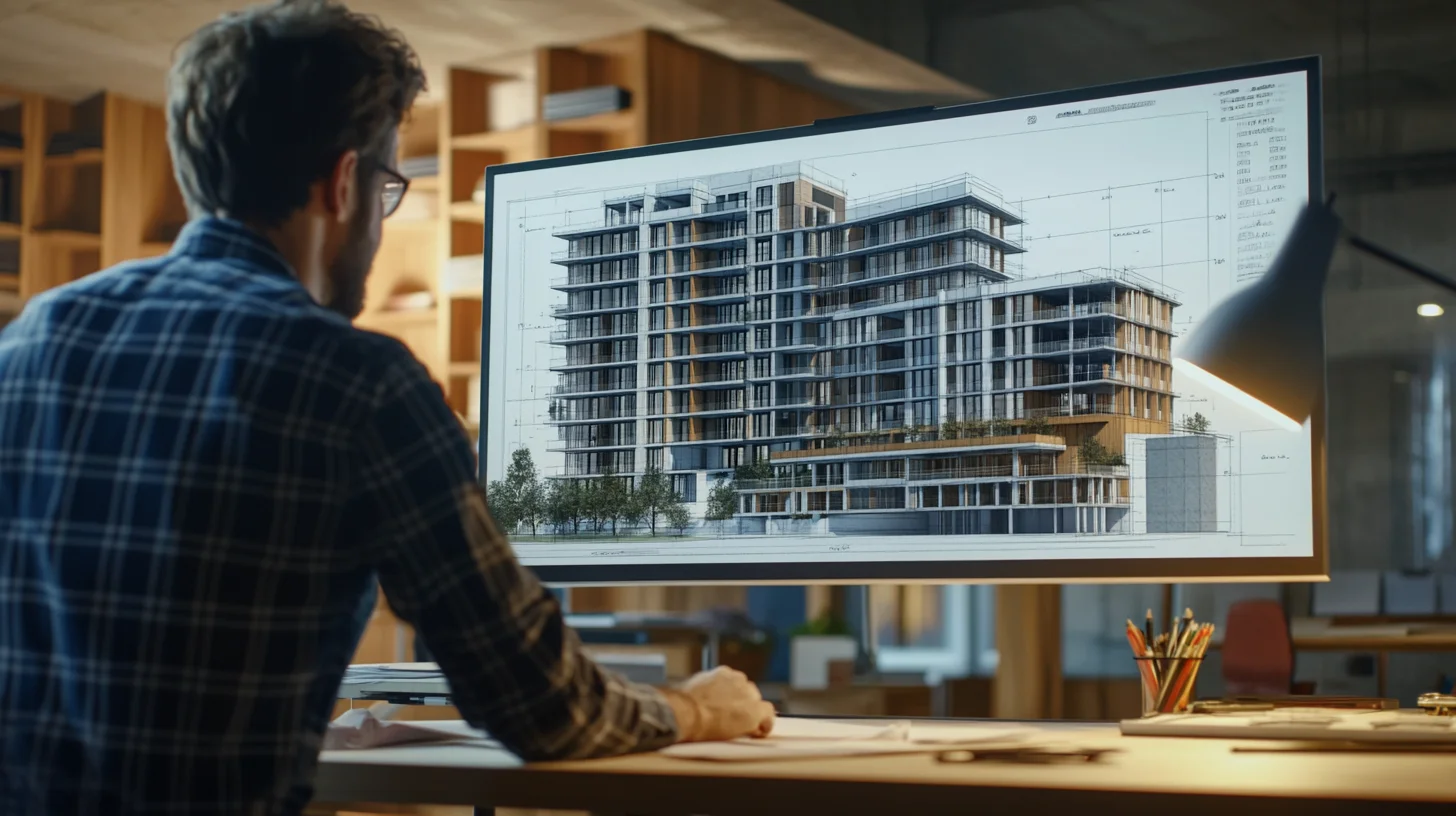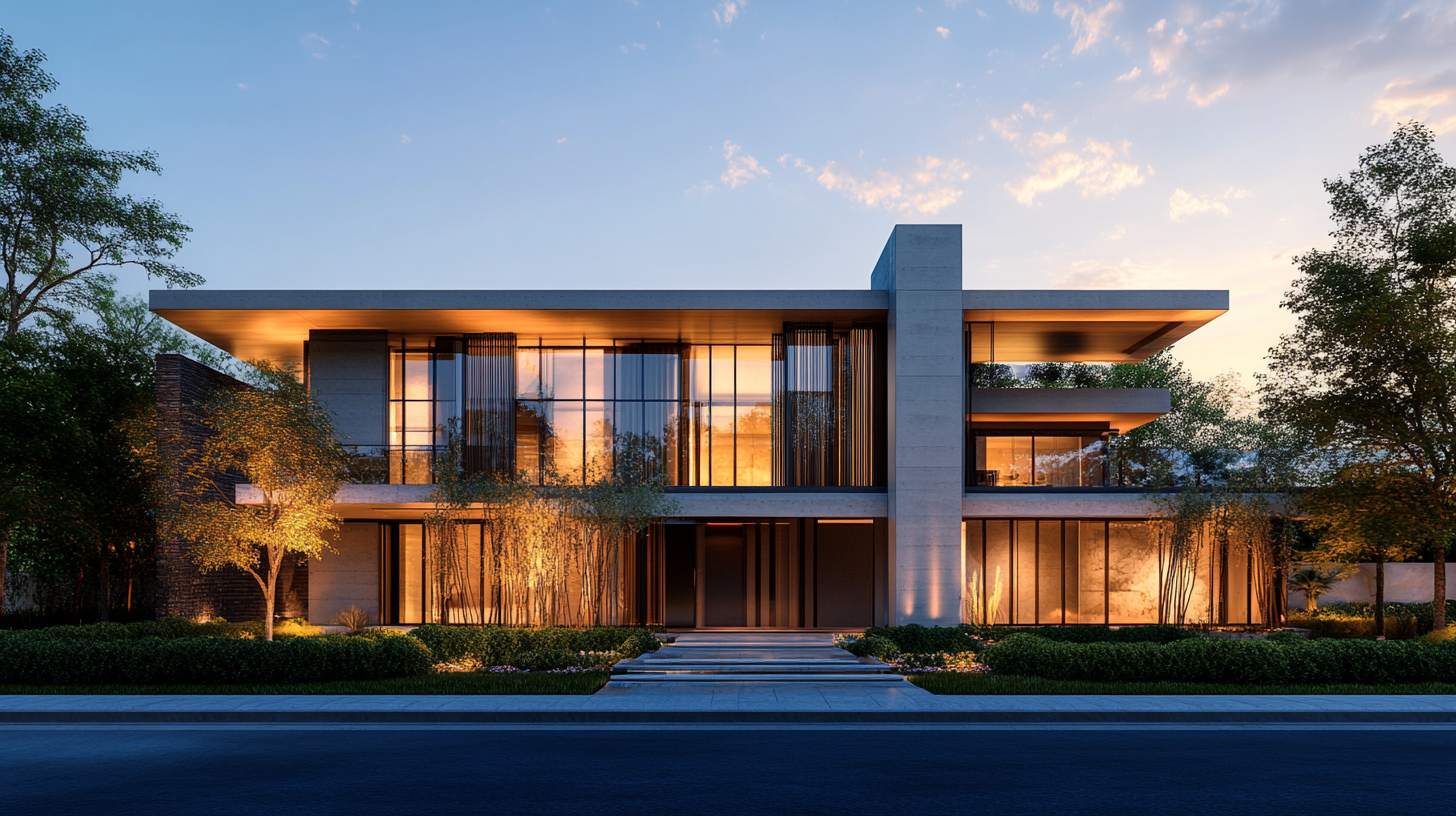
How Facade and Cladding Impact Energy Efficiency in Architecture
Effective architectural designs marry form and function, and nowhere is this more evident than in facade and cladding design. These essential elements do more than determine a building’s appearance. They play a pivotal role in controlling energy efficiency, reducing power consumption, and contributing to sustainable construction.
Whether you’re an architect, a building engineer, or a sustainability consultant, optimizing facade and cladding systems can reduce a building’s environmental footprint while maintaining aesthetic appeal. In this blog, we’ll explore how façade and cladding impact energy use, covering definitions, innovative solutions, and practical examples to inspire your designs.
What is Facade and Cladding in Architecture?
Facade refers to the exterior face of a building, acting as its visual identity. It is the first and most prominent element of architectural design and can significantly influence how a building interacts with its environment.
Cladding, on the other hand, refers to protective materials applied to the building’s facade. It is like an extra skin that acts as a barrier, shielding the internal structures from weather, UV radiation, and pollution.
How They Work Together
While the facade ensures aesthetics and interaction with natural elements, the cladding system complements it by adding functionality, durability, and insulation. Together, they create an envelope that protects the building while maintaining energy performance.
The Role of Facades in Energy Efficiency
The design of a building’s facade extends far beyond aesthetics. It is integral to achieving energy efficiency in architecture.
Facade Orientation and Solar Heat Gain
The orientation of the facade determines how much sunlight a building absorbs throughout the day. North and south-facing facades typically have less exposure to solar gain, making them an optimal choice for cooler climates. East and west-facing facades require strategic shading systems to minimize overheating during peak hours.
Passive Design through Smart Facades
Smart facades employ passive design strategies to enhance energy performance. For instance, double-skin facades create an insulating layer that can regulate indoor temperatures without relying heavily on HVAC systems. Dynamic shading systems, like blinds or shutters that adjust with sunlight angles, further improve energy efficiency by controlling daylight exposure.
Examples of Energy-Saving Facades
- Double-Skin Facades: Insulates against temperature extremes while maintaining ventilation.
- Dynamic Shading Systems: Automated shades that adapt to sunlight conditions in real-time.
When designed strategically, facades serve as a powerful mechanism for reducing energy consumption while improving indoor comfort.
Types of Cladding Systems and Their Energy Benefits
The choice of cladding system directly impacts a building’s insulation performance, ventilation, and overall energy consumption. Here’s an overview of the most effective cladding solutions for energy-efficient buildings:
1. Insulated Cladding
Insulated cladding systems are designed to regulate internal temperatures. By keeping interiors cooler during summer and warmer during winter, they reduce the building’s reliance on artificial heating and cooling systems.
2. Ventilated Facade Systems
These systems improve natural ventilation by enabling airflow through a gap between the cladding and the main building structure. By reducing heat absorption and moisture accumulation, ventilated systems enhance energy performance and durability.
3. Reflective and Light-Colored Cladding
Heat gain can also be significantly reduced by using reflective or light-colored cladding, particularly in hot climates. These materials reflect sunlight rather than absorbing it, minimizing the internal heat load.
Key Cladding Materials
- Glass for transparency and daylight optimization.
- Aluminum Composite Panels (ACP) for lightweight and fire-resistant solutions.
- Stone or Terracotta for natural insulation properties and aesthetic appeal.
- High-Pressure Laminate (HPL) for robust protection against weather conditions.
Sustainable Materials and Technologies
The rise of sustainable design demands eco-friendly cladding options and innovative material technologies. Advanced materials and tools are paving the way for greener construction practices.
Eco-Friendly Cladding Options
Recycled wood, bamboo, and composite materials sourced sustainably not only reduce carbon footprints but also offer excellent durability.
Smart Materials for Energy Optimization
New technologies like self-cleaning cladding reduce maintenance efforts, while phase-change materials (PCMs) can regulate temperatures by absorbing and releasing heat. These advancements significantly reduce operational costs over a building’s lifespan.
Technology’s Role in Design
AI-powered software solutions allow architects to simulate how different cladding materials and facades will perform under specific conditions, enabling energy optimization during the design phase.
Real-World Case Studies
Case 1: The Crystal, London
This award-winning building is engineered for net-zero energy performance. Its double-skin facade, combined with automated blinds, optimizes daylight while minimizing energy usage.
Case 2: Infosys Campus, Pune
An iconic example of sustainable design in India, this campus employs ventilated facades and terracotta cladding to maintain indoor temperatures and reduce HVAC loads.
Examples like these highlight how thoughtful facade and cladding strategies can deliver clear energy savings without compromising architectural vision.
Key Considerations for Architects and Builders
When designing or selecting facade and cladding systems, architects and builders should keep these factors in mind to maximize performance and sustainability.
1. Climate-Responsive Design
Tailor facade orientation and material choices to align with local climatic conditions. For example, reflective cladding works well in hot regions, while insulated systems are ideal for colder climates.
2. Material Selection
Focus on materials that balance aesthetics, durability, and energy efficiency. Take into account the building’s expected lifespan and maintenance requirements.
3. Sustainability Goals
Explore innovative but eco-friendly solutions. Investing in technologies like recycled composites and AI-powered tools supports long-term sustainability goals while aligning with growing regulatory requirements.
Build Smarter for a Sustainable Future
Facade and cladding are more than just external components of architecture; they are key instruments in shaping energy-efficient, sustainable buildings. From minimizing heat gain to harnessing smart technologies, facade and cladding systems play a vital role in reducing energy consumption while adding aesthetic value.
For architects, builders, and sustainability consultants, the challenge lies in balancing energy performance with design innovation. The opportunities, however, are endless. By adopting sustainable materials and intelligent design practices, you can create buildings that are not only beautiful but also environmentally responsible.
Looking to optimize your building’s facade and cladding for better energy savings? Collaborate with the top architecture company in Chennai. From interior design to building construction, we’re here to make your projects smarter, greener, and more impactful. Contact us today to get started!



